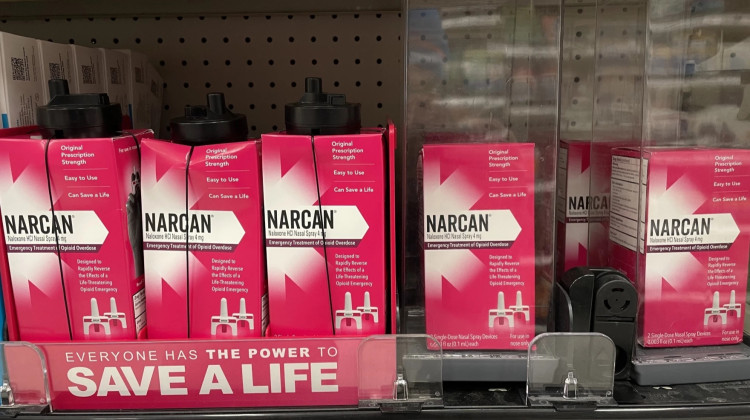
The Big Four Bridge, which connects Louisville, Kentucky with Jeffersonville, Indiana.
David Kidd/Flickr
While drug-related deaths continue to rise throughout Indiana, one county saw a decrease in drug fatalities in 2017.
Overdose deaths in southern Indiana's Clark County dropped from 90 to 60 between 2016 and 2017, a 33 percent decrease, according to preliminary numbers from the county’s public health department.
The decrease bucks a statewide trend: Indiana saw a 28 percent rise in overdose deaths between may of 2016 and mid-2017, according to preliminary numbers from the CDC.
County Public Health Officer Eric Yazel, who also works as an emergency room physician in Jeffersonville, Indiana, said anecdotally, he’s seeing fewer people come into the ER after overdoses.
“We tabulate our opiate-related overdose visits as well, not just deaths, and our visits are down,” he said. “That would hopefully indicate that our use is down in the county as well.”
However, he’s quick to say the drop in deaths — or even emergency room visits — doesn’t necessarily mean fewer people are using drugs — just that more people are surviving their drug use.
He thinks many factors are at play.
“I think we’re getting to our overdoses better and doing a good job of providing early treatment and intervention,” he said.
Early in 2017, Clark County opened its syringe services program, known as the Intercept. And the community has banded together in the form of Clark County CARES, a grassroots advocacy organization made of representatives from law enforcement agencies, religious organizations and public health officials.
“We place the emphasis on community education,” said the Rev. Nancy Woodworth-Hill, an Episcopalian pastor who serves as the public face of CARES.
Woodworth-Hill says the organization has been trying to help the county see that treating drug addiction as a medical problem, not a moral one, benefits the community as a whole … and that a healthy population is a working population.
“What people often don’t understand is if you’re in the outskirts…. you don’t think of the concentric circles of impact,” she said.
She says for the most part, the county has been supportive of efforts such as the syringe exchange, though there are some outliers.
Yazel agreed with Woodworth-Hill.
“Ever since I took over, I’ve gotten cooperation from every single aspect of the county: businesses, elected officials, police, fire, EMS, recovery places,” he said. “Everybody has kind of pitched in. I do think it shows that no matter what the underlying reason for the drop, some of these interventions are working.”
One of the most effective interventions? Increased use of naloxone (brand name Narcan), which became available over-the-counter in most Indiana pharmacies in 2016. Lay people as well as responders have begun to keep it on hand.
“I think there’s a greater comfort level there,” said Yazel.
Clark County Coroner Billy Scott credits the drop almost entirely to naloxone.
“If they didn’t have Narcan, the number of overdose deaths would be in the hundreds,” said Scott. "Narcan is really what’s doing it.”
“The drugs are just as available as they have been in the past, [but] everyone is carrying that stuff now,” he added.
Public health officials credit more potent — and deadly — forms of opioids, including fentanyl, with pushing the overdose fatality rate upward. Both Woodworth-Hill and Scott said fentanyl has made its way into Clark County. Scott said half of the county’s overdose deaths were related to the potent drug.
Yazel said while the data is heartening, there’s still work to be done: The first step: analyzing the numbers more closely.
“We have to make sure we know how we’re interpreting the numbers so we know where to focus our efforts,” said Yazel.
 DONATE
DONATE








 Support WFYI. We can't do it without you.
Support WFYI. We can't do it without you.